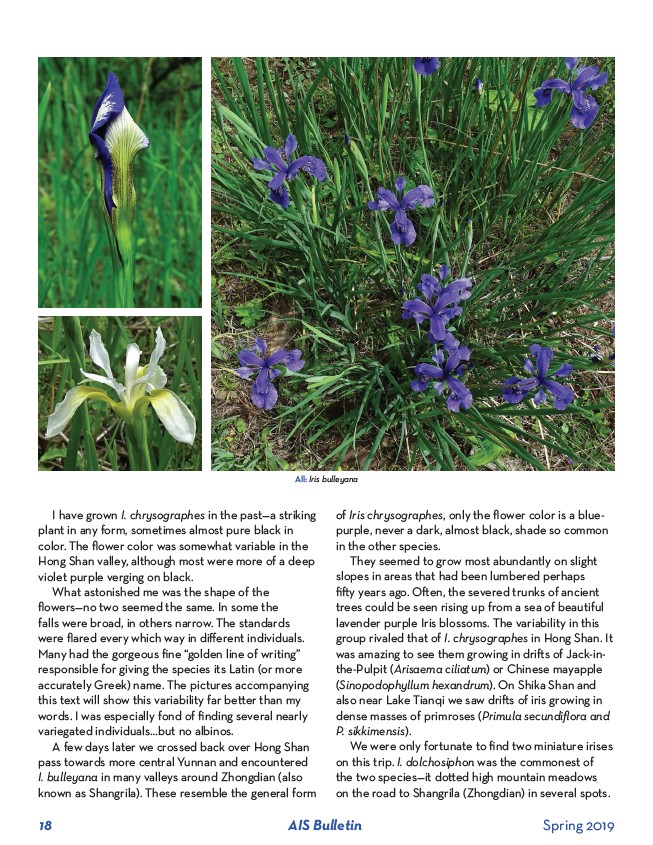
All: Iris bulleyana
I have grown I. chrysographes in the past—a striking
plant in any form, sometimes almost pure black in
color. The flower color was somewhat variable in the
Hong Shan valley, although most were more of a deep
violet purple verging on black.
What astonished me was the shape of the
flowers—no two seemed the same. In some the
falls were broad, in others narrow. The standards
were flared every which way in different individuals.
Many had the gorgeous fine “golden line of writing”
responsible for giving the species its Latin (or more
accurately Greek) name. The pictures accompanying
this text will show this variability far better than my
words. I was especially fond of finding several nearly
variegated individuals…but no albinos.
A few days later we crossed back over Hong Shan
pass towards more central Yunnan and encountered
I. bulleyana in many valleys around Zhongdian (also
known as Shangrila). These resemble the general form
of Iris chrysographes, only the flower color is a bluepurple,
never a dark, almost black, shade so common
in the other species.
They seemed to grow most abundantly on slight
slopes in areas that had been lumbered perhaps
fifty years ago. Often, the severed trunks of ancient
trees could be seen rising up from a sea of beautiful
lavender purple Iris blossoms. The variability in this
group rivaled that of I. chrysographes in Hong Shan. It
was amazing to see them growing in drifts of Jack-inthe
Pulpit (Arisaema ciliatum) or Chinese mayapple
(Sinopodophyllum hexandrum). On Shika Shan and
also near Lake Tianqi we saw drifts of iris growing in
dense masses of primroses (Primula secundiflora and
P. sikkimensis).
We were only fortunate to find two miniature irises
on this trip. I. dolchosiphon was the commonest of
the two species—it dotted high mountain meadows
on the road to Shangrila (Zhongdian) in several spots.
18 AIS Bulletin Spring 2019